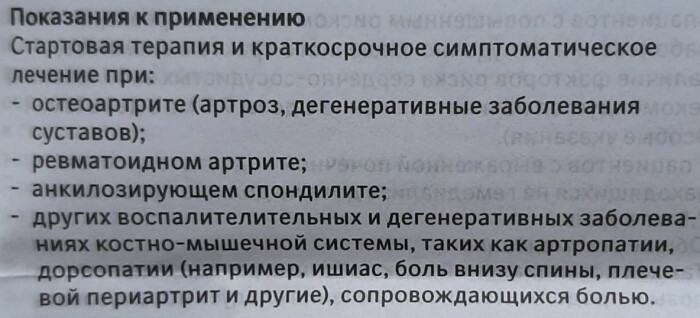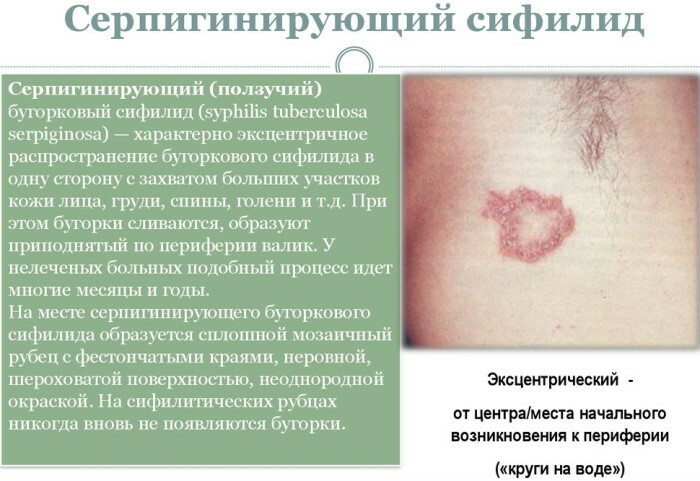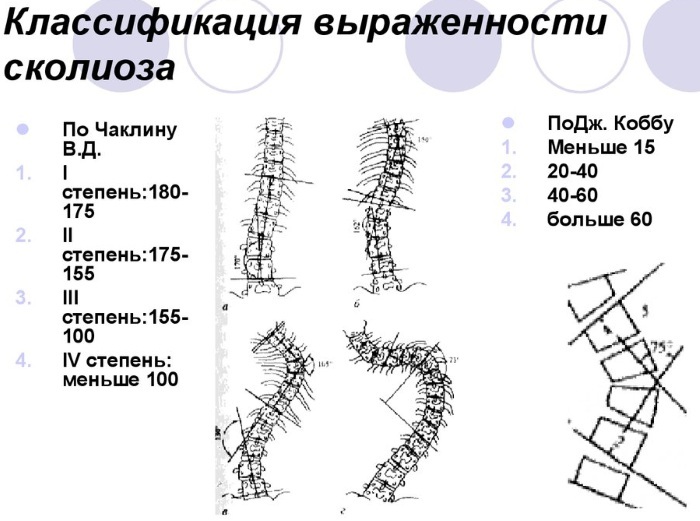Content
- What is general sputum analysis
- Diseases for which a doctor may prescribe a general sputum test
- How to prepare for the analysis in order to pass it correctly?
- Preparing the child
- Collection Algorithm
- Is it possible to collect sputum for analysis at home?
- What to do if you can't collect sputum
- Characteristic features of sputum analysis
- Character
- Colour
- Smell
- Impurities
- Video about collecting sputum for general analysis
Abnormal discharge that comes from the respiratory tract is called sputum. Since the process of expectoration indicates the presence of dangerous pathological changes in the respiratory organs, a general analysis of the mucous substance should be carried out in a timely manner. Clinical collection of material is not distinguished by a complex algorithm, which allows taking sputum for research even at home.
What is general sputum analysis
Collection of sputum for general analysis, the algorithm of which should take into account the existing diseases, is one of the the most effective diagnostic methods to determine the characteristic features of the respiratory disease ways.
Since diseases such as putrefactive pneumonia, bronchitis, asthma, malignant tumors in the lungs and many others are especially dangerous pathologies for the human body, the analysis makes it possible to identify them at the initial stage and timely prescribe treatment. Sputum collection includes diagnostic measures of a bacteriological, chemical, macroscopic and microscopic nature.

All of them make it possible to assess the quality of mucus, on the basis of which the doctor can draw up a detailed medical opinion. The main goal for conducting a study is to clarify the existing diagnosis. In a healthy body, phlegm is usually not produced. Progressive pathological processes lead to a change in the work of secretion, which increases the total amount of mucus.
The daily volume of sputum ranges from 50 to 120 ml of the substance, depending on what bacteriological processes are present in the body.
Respiratory disorders in the normalization of the secretion of the cellular structure are able to increase the amount of fluid up to 200 ml per day. A rapid increase in the indicator is characteristic of the accumulation of purulent formations or blood, which subsequently exit through the bronchi. Gangrene of the lung tissue, a drained abscess or bronchiectasis is characterized by sputum secretion of 1.5-2 liters per day.
Diseases for which a doctor may prescribe a general sputum test
The appointment of a clinical analysis of sputum is characterized by the presence of diseases of the respiratory system in the patient, which are characterized by a chronic or acute course.
The main indications for the delivery of mucus:
-
Asthma of a bronchial nature. In the initial type of asthma, the patient coughs up a small amount of mucus, which may decrease over time. The structure of sputum is most often mucous, without a cadaverous odor.
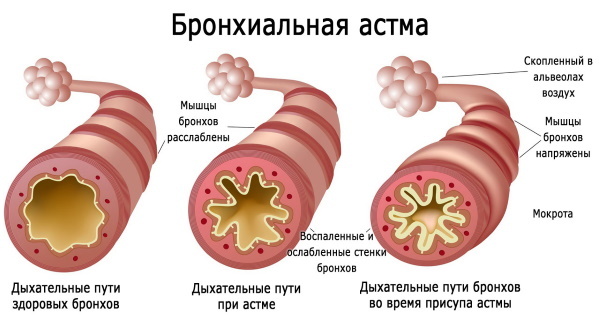
- Lung tissue abscess. With such a pathological process, a large amount of mucus is secreted into the patient's lungs, which is diagnosed as a significant deterioration in health. The phlegm may be purulent, bloody, or slimy. In the case of a pathological change, the smell of mucus is somewhat cadaverous, its color is dark green. If a patient has a break in the liver abscess into the lung tissue, bile pigments are found in the mucous substance. A particularly severe case, in which lung tissue disintegrates due to complications, is characterized by the presence of elastic fibers in the sputum.
- Bronchiectasis disease. In the presence of bronchiectasis, the patient's sputum volume significantly exceeds the standard. Such an increase in mucous substance is regarded as a symptom of a rapid deterioration in health. In the case of the presence of pus in the bronchi, the test sputum is characterized by a greenish tint.
- Gangrene of the lung tissue. Such a serious disease is characterized by increased secretion of sputum, the structural features of which can accurately indicate a degenerative process in the tissues. Most often, the mucus is foamy, serous, or purulent. In addition, Dietrich plugs are diagnosed in sputum, which consist of molecular breakdown products of lung tissue and bacteria living in them. In the presence of gangrene, elastic fibers are not always found, since under the influence of fermented substances, they can dissolve. In 80% of cases, Vincent's spirochete is also found.
- Acute pleural empyema. In the presence of such a disease, the inflammatory process in the lung tissue goes into an active stage, which is accompanied by a significant deterioration in the patient's condition. Various molecular compounds are observed in the sputum, indicating an acute inflammatory nature. The mucus itself is most often more than half a purulent substance.
- Malignant formations in the lungs. The presence of lung cancer suggests a structural change in sputum towards a bloody and mucous structure. The patient often has purulent accumulations that mix with the blood. With complications in the form of tissue necrosis, mucus acquires a persistent cadaverous odor. The bronchogenic course of the disease is characterized by the presence of molecules of columnar epithelium, which are found in the diagnosis of mucus. Tumor cells, elastic fibers, and eosinophils can also be detected.
-
Miliary tuberculosis. The pathological process is characterized by the disintegration of lung tissue, which leads to an increase in sputum secretion. Mucus often has blood stains in it, brown or rusty. In mucus, you can find a number of fibrinous cells, elastic tissues, as well as Koch lenses and lentils. Also, a large volume of protein structures is diagnosed in sputum - up to 150-200 g / l.
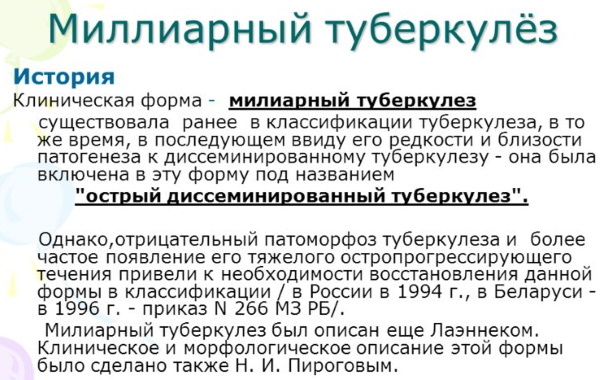
- Anthrax. A dangerous disease is characterized by the presence of a large amount of sputum, the color of which is close to brown tint, which signals the content of fresh blood in the mucus, as well as hematin - products decay.
- Pneumonia. In the presence of a disease, a small amount of mucus is released, the nature of which is most often purulent, bloody. Blood clots in sputum are detected with focal or croupous course of the pathological process. Fibrinous endings are often found in the substance, which consist of fibrin and decay products. There is a large number of red blood cells and eosinophils. Charcot-Leiden crystal formations can be diagnosed, as well as various diplococci, staphylococci or streptococci.
Indications for sputum examination are prescribed if there is a suspicion of a chronic or acute course of the disease, the localization of which is associated with lung tissue. The most common reasons for examination are the presence of malignant tumors, tuberculosis and bronchitis.
The above-described diseases determine a high risk category, therefore, such sputum tests should be investigated in the presence of any symptomatic manifestations. In addition to direct analysis, mucus collection can be carried out after undergoing a therapeutic course - in order to diagnose possible relapses.
How to prepare for the analysis in order to pass it correctly?
Sputum collection should be carried out in the context of preparatory activities, which are particularly important recommendations that indirectly affect the effectiveness of the general clinical analysis. If you ignore the preparatory process, various impurities appear in the patient's mucus, distorting the result.
The preparation algorithm includes:
-
Choice of capacity. The most optimal vessel for collecting analysis is a special container, which can be found in any pharmacy. If it is absent, you can resort to using a small food container or a half-liter jar. At the same time, it is important to understand that their use is an atypical case, therefore it is best to buy a special vessel.

- Teeth cleaning and rinsing the mouth 2-3 hours before the examination. So, the elimination of various food particles and excess saliva significantly increases the accuracy of diagnostic measures.
- Drinking lots of fluids. It is recommended to drink a lot of water, as it is able to thin the detected mucus, which will allow you to more accurately determine the final result.
- Use of medications for expectoration. The use of such drugs makes it possible to avoid an unpleasant situation during the examination, when there is no opportunity to collect mucus.
At the first examination of bronchial mucus, a person may need a certain time to correctly perform the delivery technique. Also, many doctors recommend quitting smoking for 2 days before diagnosis, which eliminates additional distortion of the results by increasing the chemical properties of the mucus being examined.
Preparing the child
Preparatory measures for taking an analysis in children is a specific process, because a small child cannot yet cough up mucus on his own. In this case, it is recommended to independently induce a reflex cough in the child, which is possible due to the process of irritation using a cotton swab.
For example, cotton wool is wrapped around the handle of a cutlery, with which an adult will press on the back wall of the mouth and tongue. Such a reflex will provoke a coughing process, along with which the necessary mucus will come out. In addition to children, such actions can be used in the case when the examined person is not able to cough up on their own, as well as in the absence of the effectiveness of special breathing exercises before diagnostics.
Collection Algorithm
In addition to the preparatory measures described above, you need to know how to properly take a sputum test. In order for the secretion of mucus to be the greatest, it is taken in the morning, on an empty stomach. Despite this, it is possible to examine bronchial mucus during the day, but its quality and volume will be much lower.
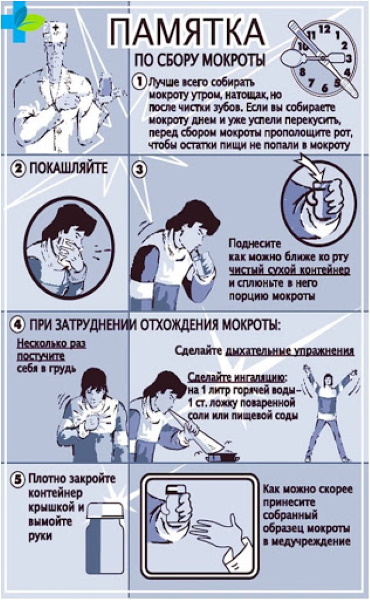
General collection algorithm:
- Take a deep breath for 10 seconds while holding your breath.
- Exhale gently and smoothly.
- Repetition of 2 breaths for 10 sec.
- Exhale with a repulsive force from the chest, after which you must immediately clear your throat.
- Bringing the vessel to the lower lip, followed by spitting out mucus.
Collection of sputum for a general analysis, the algorithm of which is performed based on the above recommendations, allows you to collect the required volume of mucus for further research - from 2 to 5 ml. If the patient has difficulty coughing up, lie on one side, leaning forward slightly. In order to speed up the process of sputum discharge, it is recommended to use a moisturizing inhalation before direct analysis.
A few days before delivery, you can start taking expectorant drugs. Collecting sputum in this way has a significant drawback, in which the patient may incorrectly perform the technique and bring a large amount of saliva into the test tube. In this case, the doctor resorts to collecting secretions using bronchoscopy, which is characterized by taking the required volume of mucus using an endoscopic device.
Is it possible to collect sputum for analysis at home?
Collection of sputum for general analysis, the algorithm of which does not require complex preparation, can be performed at home. At the same time, step-by-step execution does not differ in any way from taking material in the clinic. It is especially important to pay attention to the fact that after direct ingress of the substance into the vessel, it is necessary to tightly close the container, and then deliver it for examination as soon as possible.

Otherwise, the quality and effectiveness of the diagnostic measure is reduced. Since more than half of the cases of home sputum collection there are significant violations of the rules, it is best to go to the clinic or diagnostic center for a more thorough and effective research.
What to do if you can't collect sputum
If the patient is unable to collect mucus by holding the breath, another method should be used. To do this, you need to gently enter the chest from 2 to 5 times, after which it is good to clear your throat. In the absence of the effectiveness of the above collection methods, you can resort to standard respiratory exercises, the use of which will also be useful as a preparatory event before passing analysis in the clinic.
In order to inhale at home, take a few breaths over well heated water. In the liquid itself, you must add 1 tbsp. l. salt or baking soda. Then - cough up and collect the required amount of mucus. If a patient has tuberculosis, they often resort to inhalation techniques with the addition of an isotonic solution based on sodium chloride. This allows you to more effectively start the coughing process.
Characteristic features of sputum analysis
Collection of sputum for general analysis, the algorithm of which depends on the patient's age, is an important diagnostic measure for the study of human biochemical parameters. Even at a time when there was still no modern laboratory equipment and microscopes, experts made a diagnosis by the characteristic features of mucus.
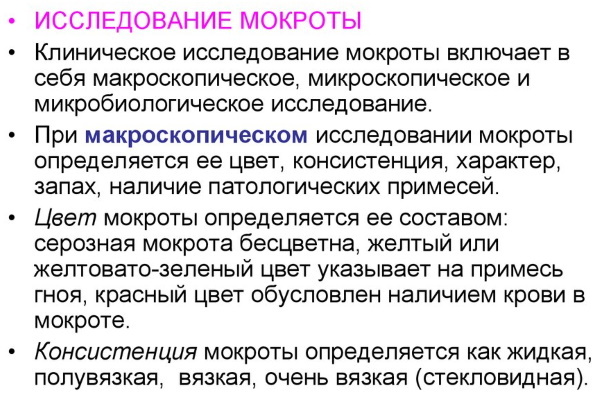
Key aspects that a doctor pays attention to when examining a mucous substance:
- quantity, volume;
- character;
- Colour;
- layering;
- smell;
- the presence of impurities;
- other physiological reactions of the body.
The above factors allow a thorough assessment of sputum, which indirectly affects the formulation of an accurate diagnosis and further work on the treatment of the pathological process. This analysis is the most important research method in the presence of many dangerous diseases.
Character
Depending on the characteristic features of the liquid, in medical practice, the main types of sputum are distinguished, characteristic of certain pathological processes:
- Mucous. The most favorable and easily treatable type of mucous structure. Occurs in tracheitis, chronic bronchitis or bronchial asthma.
- Purulent-mucous. In this case, a bacterial-type infection joins the mucous type. In addition to the usual mucus and cough, the patient secretes a mucous fluid, which contains the products of microorganisms and bacteria. The type is typical for pneumonia, lung tissue abscess and gangrene.
- Purulent. The factors affecting the development of a large amount of sputum are similar to the previous species, however, in this case, the percentage of purulent formations significantly exceeds the amount of ordinary mucus. The patient's condition is rapidly deteriorating.
- Blood. In the process of getting the cellular structures of erythrocytes or individual blood clots into the mucous membrane, expectoration is characterized by a dark red, brown tint. Such manifestations indicate mechanical damage to vascular tissues. The most common causes are actinomycosis, malignancy, injury, or pulmonary infarction.
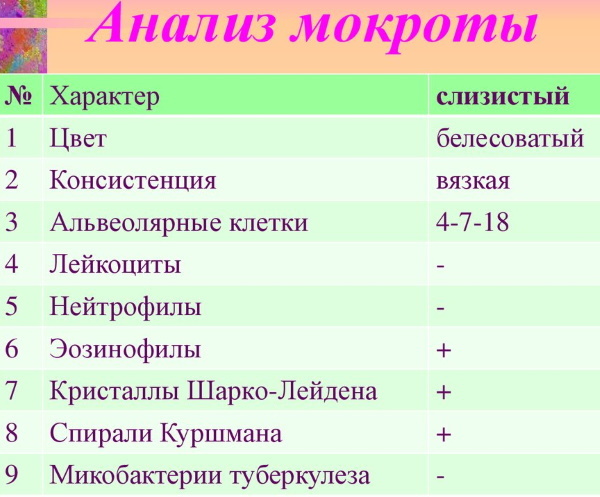
An evaluative judgment of the nature of sputum in the process of coughing makes it possible to more accurately diagnose, as well as determine the main pathological process that develops in the human respiratory system.
Colour
The color shades of sputum that is released during coughing depends on the nature of the pathological process:
- transparent or gray with a mucous type;
- yellow or gray interspersed with a purulent substance with a mucopurulent type;
- green, brown or dark yellow with a purulent type;
- red and rusty, in some cases pink, with a blood type.
The green tint of the mucous substance indicates the presence of a bacterial infection in the tissues of the body. Also, in some cases, the sputum may be black, which is a unique symptom that indicates the presence of coal impurities. These symptoms are common in miners.
Smell
The mucous substance during expectoration in most cases does not have a characteristic odor. In this case, the exception is the release of a purulent substance from the lung tissue. In the presence of dead tissue cellular structures, a putrid and unpleasant odor is observed.

The presence of a fruity aroma in the mucous substance is explained by the presence of a breakthrough of the cyst of the lung tissue, in which helminth or echinococcus developed for some time.
Impurities
In a normal state, the phlegm is practically free of any impurities. The presence of additional substances in the mucous structure is determined as a possible pathological process. In this case, microscopic examination is required.
| The nature of the sputum | Visual description | Pathological processes |
| Purulent | Yellow or green tint, high viscosity. | Acute bronchitis, lung tissue abscess, actinomycosis, gangrene. |
| Mucous | Most often it does not have a color, a viscous consistency. | Bronchial asthma, inflammation in the bronchi. |
| Serous | Visually similar to blood plasma. | Edematous processes in the lungs. |
| Mucopurulent | Green or yellow, viscous texture. | Pulmonary tuberculosis, chronic bronchitis |
| Mucous bloody | Slimy character with blood streaks or pigments. | Bronchogenic cancer, pneumonia. |
| Bloody | The main component of impurities is blood. | Acute tuberculosis, malignant formations |
| Mixed | Suppurative formations with blood and mucus. | Bronchiectasis disease |
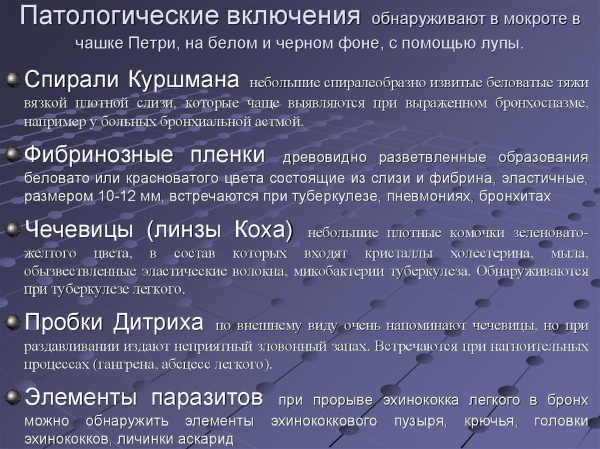
Various impurities in the mucous substance are due to the presence of a large number of red blood cells, serous fluid or purulent formations. The presence of the above inclusions makes it possible to accurately assess the degree of pathological damage to the lung tissues.
A cough followed by expectoration of phlegm is an important indicator that bacterial or inflammatory changes are present in the body. Timely collection of material followed by a general analysis allows you to quickly identify the pathological process and prescribe an effective treatment. The algorithm for taking the substance is not difficult, therefore it can be performed at home.
Video about collecting sputum for general analysis
How to conduct bacteriological examination of sputum:

